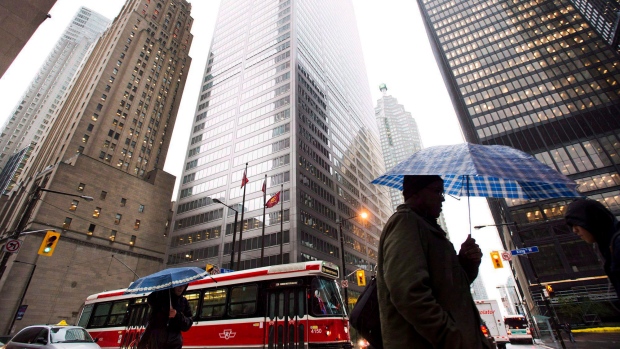Nov 25, 2016
How a 'Trump-driven' run-up in rates could benefit Canada's banks
By Paul Bagnell

The election of Donald Trump to the highest office on the planet seems to have changed almost everything. Investors are now betting on a huge wave of U.S. infrastructure spending, a boost to U.S. economic growth, stronger commodities prices, the end of the Trans-Pacfic Partnership, and a steeper path of rate hikes from the U.S. Federal Reserve.
Are Canada’s banks also destined for a so-called "Trump Bump"? Quite possibly, yes.
The banks begin reporting their fiscal fourth-quarter earnings on Nov. 29 (Bank of Nova Scotia kicks things off at 6 a.m. ET that day), and the post-election rise in bond yields is certain to be a talking point.
Two lenders have already moved to increase mortgage rates in the days since the election. Banks raise funds in the bond market, and the increase in yields since Trump’s shock win prompted Royal Bank of Canada and Toronto-Dominion Bank to modestly raise mortgage rates to better align with increased funding costs.
TRUMP'S MORTGAGE IMPACT
One Bay Street analyst says that’s a reason he’s convinced things look better for the banks’ mortgage businesses than before the U.S. election.
“We believe recent regulatory changes and the surprise rise in rates have improved the earnings outlook for the Canadian mortgage business due to a combination of lessened competition and potential margin improvement,” said Gabriel Dechaine of Canaccord Genuity in a recent report. He refers to the higher rates as “Trump-driven.”

So watch for anything the bank CEOs and their senior management teams have to say on the path of U.S. interest rates amid the Trump presidency.
The “lessened competition” Dechaine cites is a result of Ottawa’s recent moves to tame rollicking real estate markets in Toronto and Vancouver. Ottawa now requires stress tests on all new insured mortgages, and has placed restrictions on when it will provide insurance on some mortgages. Those changes make it much more difficult for people who can barely afford a mortgage to get one – and that has taken market share away from alternative mortgage providers like First National Financial and Home Capital Group. Thus, bank executives may be more bullish on their ability to win market share in the ultra-competitive Canadian mortgage market.
OTHER THINGS TO WATCH FOR
Just three months after strains in Canada’s housing market were seen as the latest threat to bank profit growth, in other words, the mortgage businesses may be seen as a source of strength again.
Here are some other things to watch for when the banks report fourth-quarter results:
- Dividend hikes: CIBC and National Bank are expected to raise their payouts to investors.
- TD Bank’s comments on Trump’s win: TD has a huge U.S. retail banking business. It will surely have something to say about the market’s new rate expectations.
- Bank of Montreal also has a large U.S. presence, particularly to business clients in the mid-west. Has the mood of those clients changed?
- What about the Bank of Canada? Regardless of what happens in the U.S., no rate hikes are expected in this country until mid-2017 at the earliest. That likely means more pressure on net interest margins, particularly for the banks that do not have big U.S. businesses.
- Low oil prices: The worst of energy-sector loan losses seems to be over, but what effect do low oil prices have on the banks’ consumer lending businesses?



